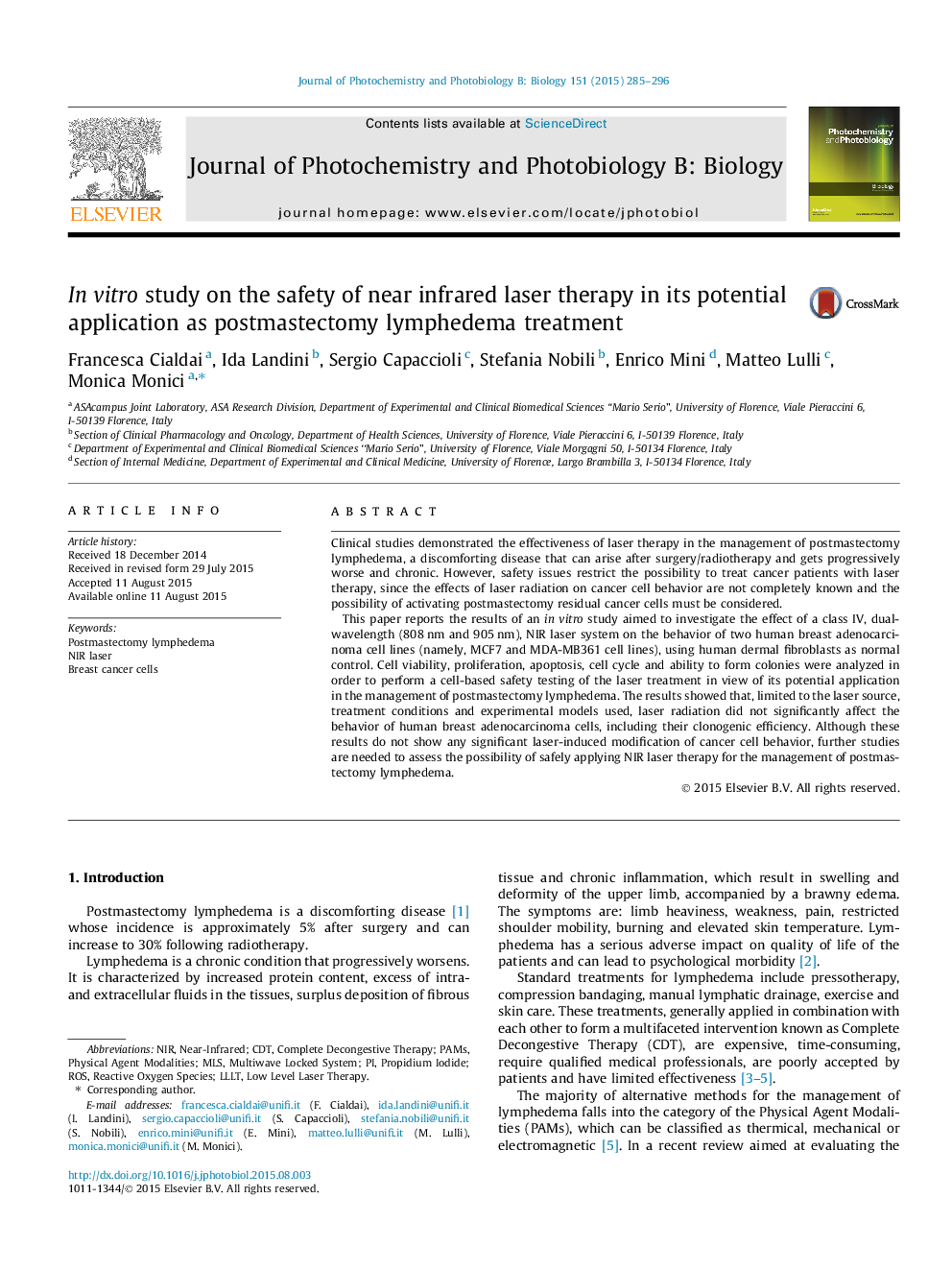| Article ID | Journal | Published Year | Pages | File Type |
|---|---|---|---|---|
| 30245 | Journal of Photochemistry and Photobiology B: Biology | 2015 | 12 Pages |
•Laser therapy can be effective in the management of postmastectomy lymphedema.•The effects of laser radiation on cancer cell behavior are not completely known.•We studied the effects of a dual-wavelength, NIR laser on human breast cancer cells.•Source and protocol evaluated did not affect significantly cancer cell behavior.•NIR laser radiation did not change the cloning efficiency of cancer cells considered.
Clinical studies demonstrated the effectiveness of laser therapy in the management of postmastectomy lymphedema, a discomforting disease that can arise after surgery/radiotherapy and gets progressively worse and chronic. However, safety issues restrict the possibility to treat cancer patients with laser therapy, since the effects of laser radiation on cancer cell behavior are not completely known and the possibility of activating postmastectomy residual cancer cells must be considered.This paper reports the results of an in vitro study aimed to investigate the effect of a class IV, dual-wavelength (808 nm and 905 nm), NIR laser system on the behavior of two human breast adenocarcinoma cell lines (namely, MCF7 and MDA-MB361 cell lines), using human dermal fibroblasts as normal control. Cell viability, proliferation, apoptosis, cell cycle and ability to form colonies were analyzed in order to perform a cell-based safety testing of the laser treatment in view of its potential application in the management of postmastectomy lymphedema. The results showed that, limited to the laser source, treatment conditions and experimental models used, laser radiation did not significantly affect the behavior of human breast adenocarcinoma cells, including their clonogenic efficiency. Although these results do not show any significant laser-induced modification of cancer cell behavior, further studies are needed to assess the possibility of safely applying NIR laser therapy for the management of postmastectomy lymphedema.
